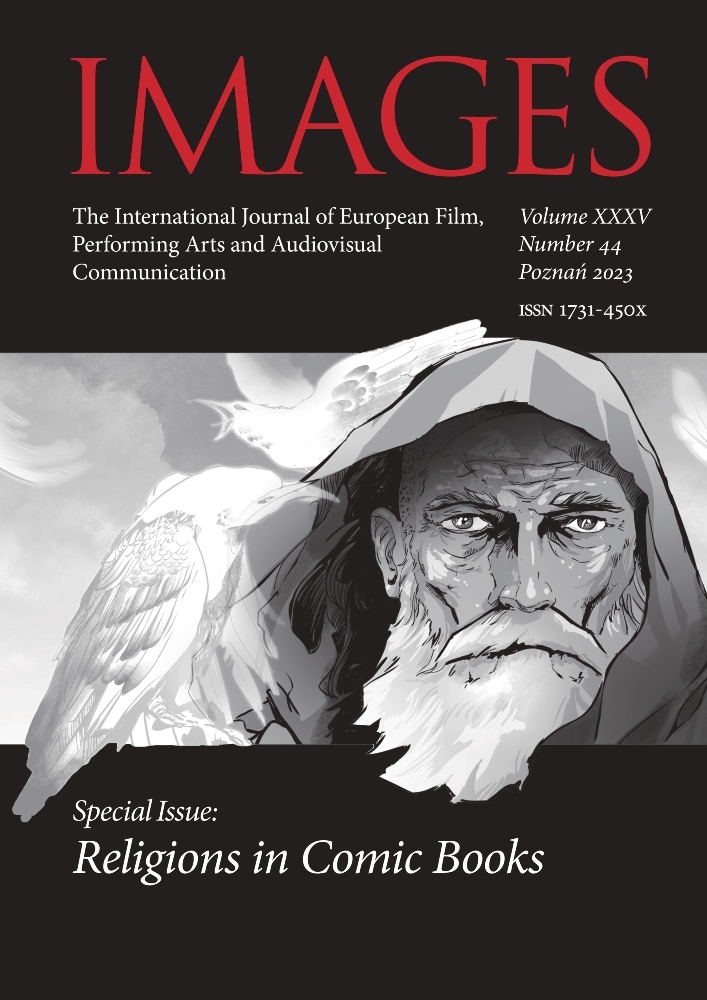Abstrakt
The article is an attempt to clarify and refine the ways of understanding two basic types of translation: from one language into another ethnic language (translation proper) – i.e. following the principles of translating homo- geneous systems of signs – and from one system of signs to another, e.g. verbal to iconic, or vice versa, which is sometimes called transmutation. Therefore, the starting point for the discussion is Roman Jakobson’s well-known typology of translation, which also took into account cases of intralingual translation within the same language, called rewording. However, the article mainly focuses on various cases of intersemiotic translation and thus transmutation, meaning situations where a text expressed in one system of signs is translated into a system of a different nature. The primary research question concerns what is actually being translated in such a situation and how this type of translation differs from a typical language-to-language translation. The article is chiefly theoretical, and the examples concern the cases of translating verbal signs into iconic ones, such as the rules governing traffic into a road sign, the translation of an image (a painting, photography) into a literary text (ekphrasis and its varieties), and a film adaptation. The equivalence of codes secures the adequacy of a linguistic translation. In the case of ekphrasis, the image is usually replaced by a verbal narrative, and in a film adaptation, the type and sequence of iconic signs must simply be invented because these sign systems are not directly equivalent, as Benveniste and Lotman believe. Examples that illustrate the main theses of the article are Jacek Kaczmarski’s art-inspired songs, several film adaptations of Shakespeare’s Macbeth (Polański, Kurosawa), and Agnieszka Holland’s film adaptation (Pokot [Spoor]) of one of Olga Tokarczuk’s novels.
Bibliografia
Bal M., Narratologia. Wprowadzenie do teorii narracji, przeł. J. Woźniak et al., Kraków 2012
Benveniste E., Semiologia języka, przeł. K. Falicka, [w:] Znak, styl, konwencja, wybór i wstęp M. Głowiński, Warszawa 1977, s. 11–42
Birkholc M., Fokalizacja w literaturze i w filmie. W poszukiwaniu wspólnej płaszczyzny badań, „Tekstualia” 2020, nr 1(60), s. 93–112 DOI: https://doi.org/10.5604/01.3001.0014.1365
Birkholc M., Szkocka sztuka w kinie. O adaptacjach filmowych „Makbeta”, EdukacjaFilmowa.pl, http://edukacjafilmowa.pl//szkocka-sztuka-w-kinie-o-adaptacjach-filmowych-makbeta/ (dostęp: 13.08.2021)
Chion M., Audio-wizja. Dźwięk i obraz w kinie, przeł. K. Szydłowski, Warszawa – Kraków 2012
Czermińska M., Ekfrazy w poezji Wisławy Szymborskiej, „Teksty Drugie” 2003, nr 2–3, s. 230–242
Deleuze G., Kino. 1. Obraz-ruch. 2. Obraz-czas, przeł. J. Magierowski, Gdańsk 2010
DX, Inspiracje plastyczne Jacka Kaczmarskiego – sekcja polska, Piosenka z tekstem, 9.10.2017, https://www.piosenkaztekstem.pl/artykuly/inspiracje-plastyczne-jacka-kaczmarskiego-sekcja-polska/ (dostęp: 16.09.2021)
Dziadek E., Problem „ephrasis” – dwa „Widoki Delf” (Adam Czerniawski i Adam Zagajewski), „Teksty Drugie” 2000, nr 4, s. 141–151
Eco U., Pejzaż semiotyczny, przedmowa M. Czerwiński, przeł. A. Weinsberg, Warszawa 1972
Eco U., Prawie to samo. O doświadczeniu przekładu, przeł. J. Miszalska, M. Surma-Gawłowska, Kraków 2021
Gadamer H.-G., Lektura jest przekładem, przeł. M. Łukasiewicz, [w:] Współczesne teorie przekładu. An- tologia, red. P. Bukowski, M. Heydel, Kraków 2009, s. 319–326
Gogler P., Kłopoty z ekfrazą, „Przestrzenie Teorii” 2004, nr 3/4, s. 137–152 DOI: https://doi.org/10.14746/pt.2004.3.8
Gozdecka R., Trzy wiersze Jacka Kaczmarskiego inspirowane malarstwem polskim. Z muzyką Zbigniewa Łapińskiego i Przemysława Gintrowskiego, „Annales Universitatis Mariae Curie-Skłodowska Lublin – Polonia” 2017, nr 15(1), s. 121–137 DOI: https://doi.org/10.17951/l.2017.15.1.121
Helman A., Twórcza zdrada, Poznań 1998 Hendrykowski M., Współczesne adaptacje filmowe, Poznań 2014
Hopfinger M., Adaptacja filmowa. Problem teorii interpretacji, Wrocław 1974
Jakobson R., O językowych aspektach przekładu, przeł. L. Pszczołowska, [w:] R. Jakobson, W poszukiwaniu istoty języka, t. 1, Warszawa 1989, s. 372–381
Kaźmierczak M., Od przekładu intersemiotycznego do intersemiotycznych aspektów tłumaczenia, „Przekładaniec” 2017, nr 34, s. 7–35
Łotman J., Semiotyka filmu, przeł. J. Faryno, Warszawa 1983
Markowski M.P., „Ephrasis”. Uwagi bibliograficzne z dołączeniem krótkiego komentarza, „Pamiętnik Literacki” 1999, z. 2, s. 229–236
McFarlene B., Novel to Film: An Introduction to the Theory of Adaptation, Oxford 1996
Stainer G., Ruch hermeneutyczny, przeł. O. Kubińska, W. Kubiński, [w:] Współczesne teorie przekładu. Antologia, red. P. Bukowski, M. Heydel, Kraków 2009, s. 327–334
Szekspir W., Makbet, przeł. J. Paszkowskiego, oprac. G. Sinko, Wrocław 1959
Tokarczuk O., Prowadź swój pług przez kości umarłych, Kraków 2019
Licencja
Prawa autorskie (c) 2023 Zbigniew Kloch

Utwór dostępny jest na licencji Creative Commons Uznanie autorstwa 4.0 Międzynarodowe.

